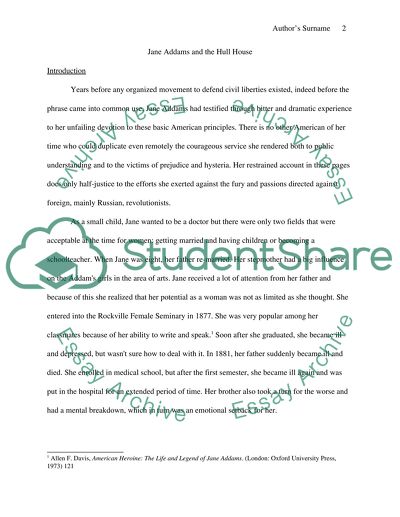Cite this document
(“Jane Addams and the Hull House Term Paper Example | Topics and Well Written Essays - 2500 words”, n.d.)
Retrieved from https://studentshare.org/environmental-studies/1410413-jane-addams-and-the-hull-house
Retrieved from https://studentshare.org/environmental-studies/1410413-jane-addams-and-the-hull-house
(Jane Addams and the Hull House Term Paper Example | Topics and Well Written Essays - 2500 Words)
https://studentshare.org/environmental-studies/1410413-jane-addams-and-the-hull-house.
https://studentshare.org/environmental-studies/1410413-jane-addams-and-the-hull-house.
“Jane Addams and the Hull House Term Paper Example | Topics and Well Written Essays - 2500 Words”, n.d. https://studentshare.org/environmental-studies/1410413-jane-addams-and-the-hull-house.


